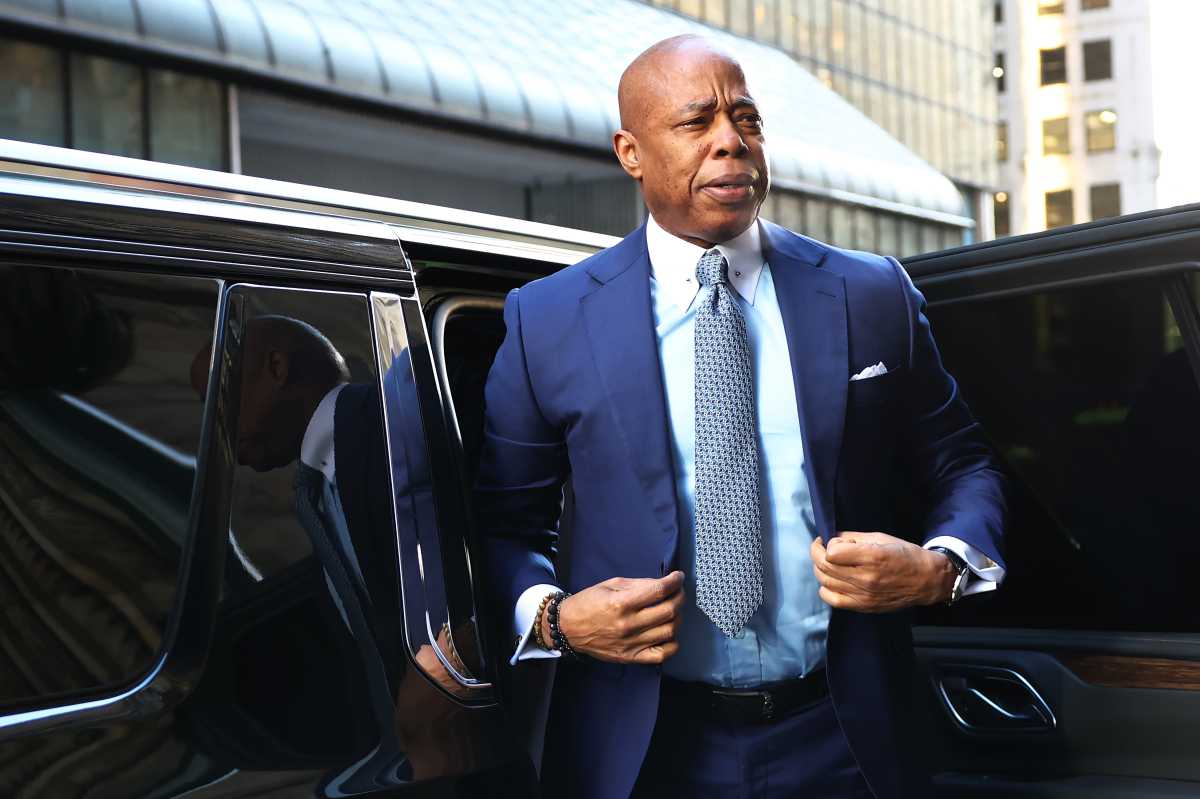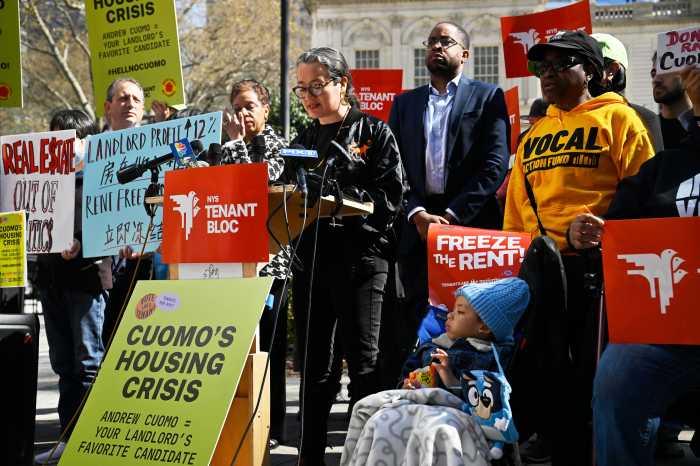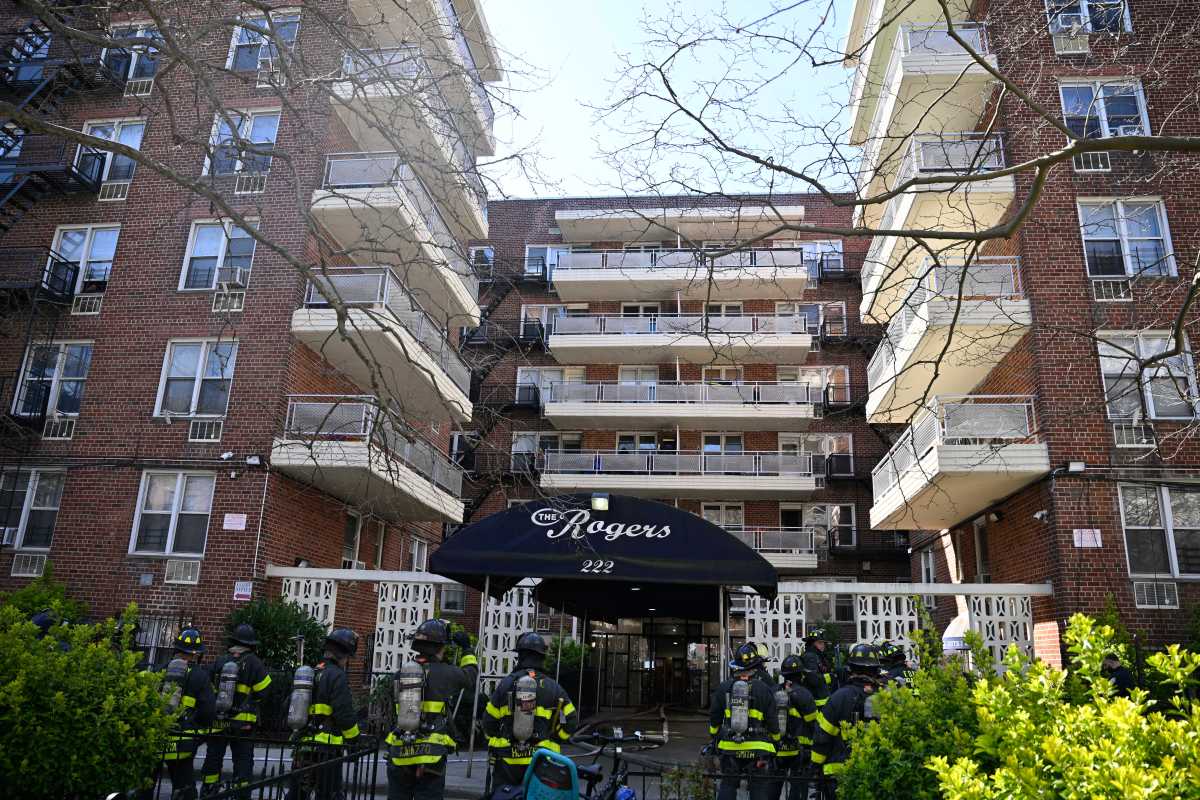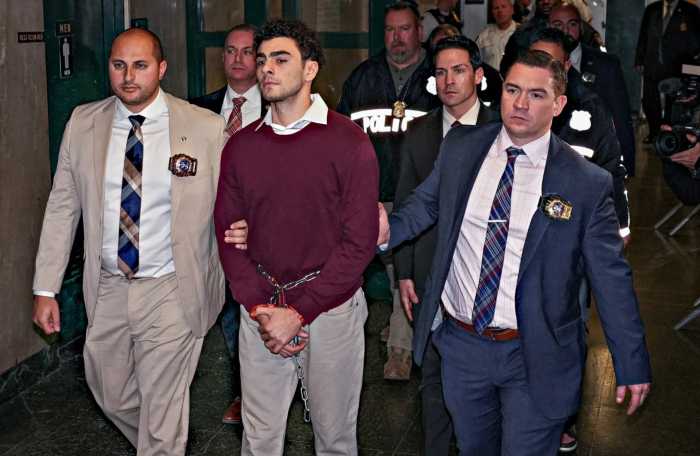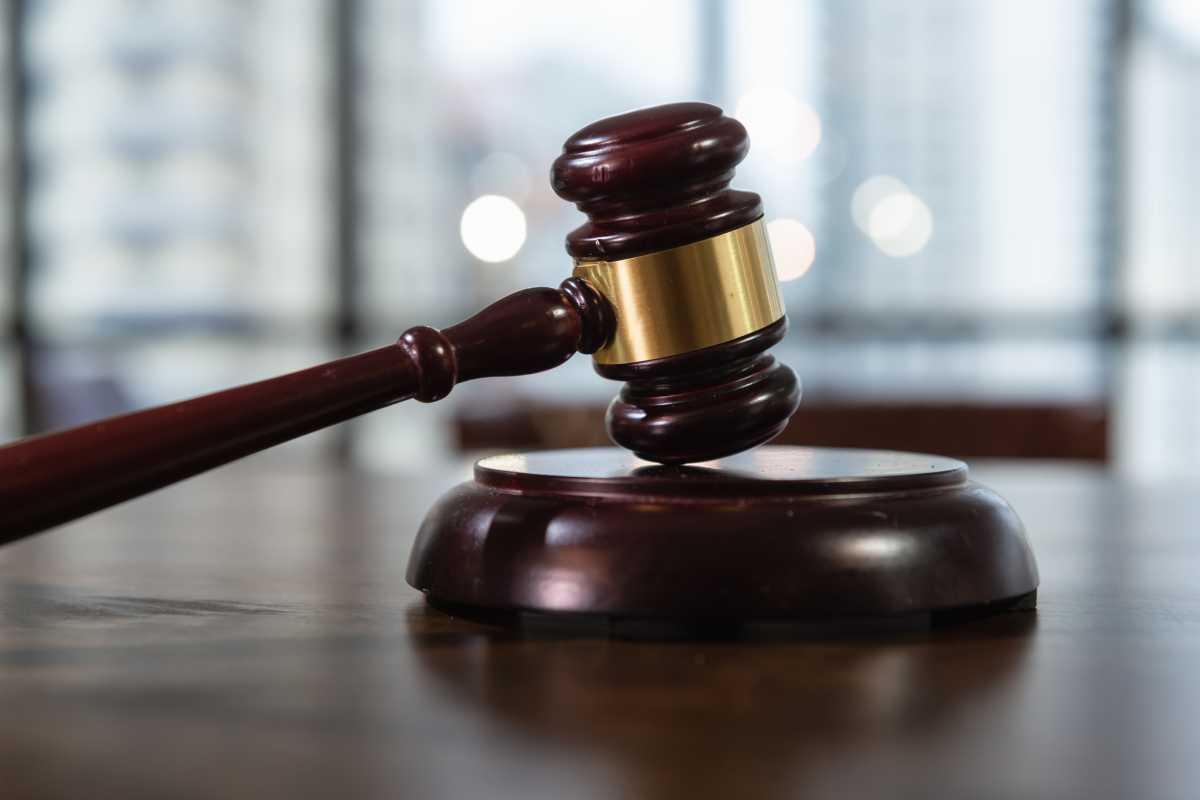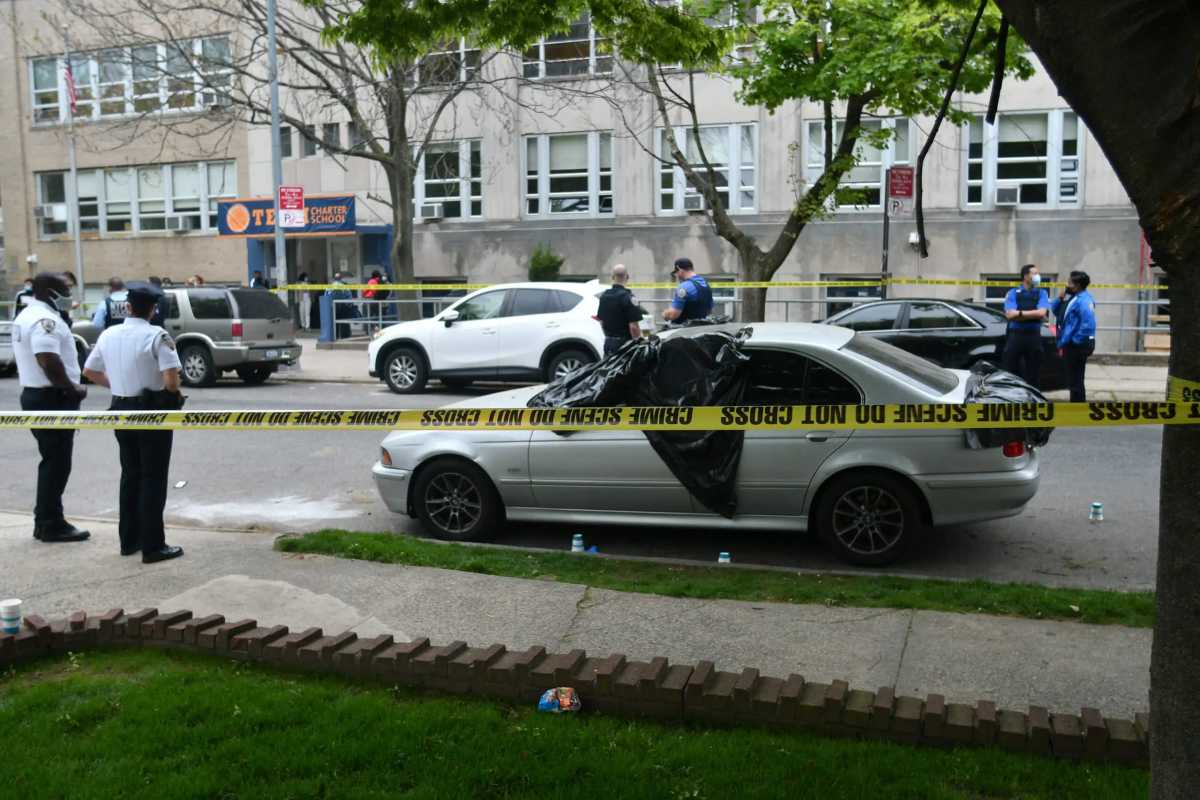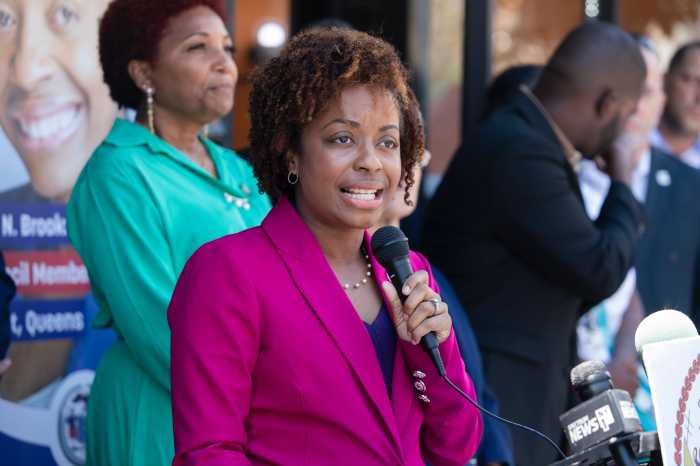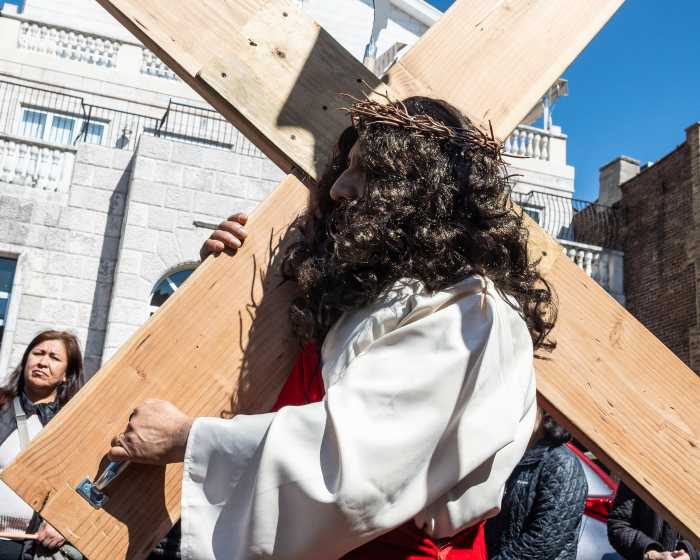Forty-three people were killed, more than two million people were without power, and the city suffered $19 million in damage. Superstorm Sandy remains one of the city’s worst natural disasters.
Everyone who was in the city the week of Oct. 29, 2012 has an experience to share, ranging from watching the lights go out in Manhattan, to salvaging their flooded house in the Rockaways after the storm ended.
In the weeks leading up to the storm, forecasters predicted that then-Hurricane Sandy was going to be severe for the tri-state area. It was already three-times the size of Hurricane Katrina and had wind gusts close to 80 miles per hour.
A day before the storm hit, Gov. Andrew Cuomo and the MTA announced that the subways would shut down and Mayor Michael Bloomberg ordered a mandatory evacuation of low-lying areas in all five boroughs, which included more than 375,000 New Yorkers.
Below is an oral history of that week from various city officials, community groups and residents. The interviews have been edited for space and clarity.
Cas Holloway, former deputy mayor of operations under Mayor Michael Bloomberg: I recall feeling confident in the days leading into the storm because we had been through Hurricane Irene … many of the players who had been through Irene if not all of the significant ones were all there.
That morning at like 4:30 in the morning … Tom Farley, who was health commissioner then, called and woke me up. He said you better come over here because the latest forecast came in and said the storm surge is going to be worse than what was expected. It was within several hours of that, that the full evacuation order was given.
Catherine McVay Hughes, former chair of Manhattan Community Board 1 and longtime Financial District resident: The NYPD actually went around with a megaphone warning people about this. It was the first time I saw this. You have to remember, the World Trade Center was still under construction and there was concern about flooding at the site and the construction equipment.
Don Riepe, lifelong Broad Channel resident and member of the Jamaica Bay Eco Watchers: We’re used to having occasional flooding. We’re used to high tide based on new moons. I normally stayed because I have an upstairs, but this time it was clearly going to be different from Irene or the other storms. I put everything up as high as I could, the computers and more valuable stuff.
Anything I didn’t want to get flooded, I took upstairs. I had a table downstairs, so I put everything else I could on the table. I was thinking if I had three feet of water, it won’t be too bad if I put it on the table. I left as soon as I could and drove to my brother’s.
Captain Jonathan Boulware, executive director of the South Street Seaport Museum: I’ve spent a career watching tropical depressions, and for a waterfront a complex as the seaport the hurricane was a big deal. Three days before the storm, we were already ready. We were battening down the fleet and removing the sails. What seems laughable in hindsight is that we put sandbags on our doors. We were preparing for a 12-foot storm surge.
Residents and organizations in the low-lying areas had to deal challenge of leaving the vulnerable neighborhoods or staying put. A similar evacuation took place more than a year earlier with Hurricane Irene, which didn’t cause as much damage to most of the city, and some residents thought it was going to be Déjà vu.
John Cori, longtime Rockaway resident: I was one of the people who also thought I would be safe here. I wanted to watch my house and I also wanted to record [the storm] and take pictures. I was still Mr. Adventure. I wanted to see it first-hand. When that first piece of boardwalk came down the block I was like ‘What an idiot I am!’
McVay Hughes: I thought it was important to be downtown and if it was necessary act as a conduit to the city agencies. That became the most important part of Community Board 1. City folks, elected officials, would contact me what was going on. Fortunately, a lot of people did move more uptown away from storm.
Jimmy Kokotas, owner of Tom’s Coney Island: The cops were chasing the people off the boardwalks because the big waves were coming in. It was scary, because just as those people were getting chased away the waves were coming in huge. If they had stayed, they would have been washed away.
When the storm hit the city, a combination of high tide, torrential rain and fierce winds exceeded the predictions. A crane high above a West 57th Street construction site bent backward. A 14-foot storm tide flooded all of the evacuated areas and some of the neighborhoods that were not evacuated. To make matters worse, half of Manhattan and parts of Staten Island, Queens and Brooklyn lost power. Over 120 homes in Breezy Point went up in flames.
Boulware: The thing that was amazing to me was the flooding happened so quickly. It came with a fierceness that I was quite taken by. The water near our doors climbed over 7 feet. My most vivid memory was seeing cars float down South Street.
Kokotas: We left early afternoon, around 1 or 2 that day. At about six o’clock or so, I told my wife, I wanted to see what’s going on and went to the store. We took a ride to the store and got there and you could see the water coming up from the sewers. It was weird seeing that stuff and then the water from the ocean. You can’t see the streets.
Cori: It was more of a giant rush of water. It wasn’t pouring rain. It was more the movement and the velocity of the ocean. It was like Niagara Falls becoming horizontal. A surfer could have surfed all the way to Rockaway Beach Blvd.
Holloway: The night of the storm at its peak, the 90 seconds that I remember the most were three phone calls that I received. One was from the head of the 911 center saying that the system was getting 10,000 calls per second or something, and that most of the calls were for down trees. Then I got a call from Sal Cassano, the fire commissioner. They didn’t have enough boats to get to the people who needed in the coastal areas. Right as that call ended, I got another beep and it was Kevin Burke, the head of Con Ed who said, “We just lost power south of 34th Street.” And I was like, “What do you mean we lost power south of 34th Street?” He said, “Well we lost it all of it, all the way.”
It was a moment where you recognize, wow the forces of this thing. It was like “Where is this going to stop?” When these kind of things happen, a million people don’t have power, and people can’t get through to 911, it all came to a head.
Marc La Vorgna, Mayor Michael Bloomberg’s press secretary: I was standing right next to Cas [Holloway]. Right after those three calls ended, Cas looked deadpan at me and went, “Go get the mayor.”
The city’s first responders scrambled to help as many people as they could in the flooded zones.
Lt. William Bedoya, FDNY: I was working in Central Brooklyn with my partner Justin. We were responding to a call near Coney Island. Every major road we went down and we came by was blocked either lines down, trees down, flooding. We kept diverting to another path to our destination and a gentleman flagged us from the middle of the street.
He told us people were trapped and one of them was his sister. He pointed us to an apartment, there was a sunken driveway, and two thirds of the door was covered in water. I dropped down to knee level. [My partner] got the longboard and said use that as a float. While that’s going on, the patient’s brother decided to run into the driveway to get her. I dropped to chest level of water, and in hindsight it was pretty dangerous because we don’t know what was in there. There could be power lines, sewage.
We continued, grabbed her brother, pried the door open, grabbed her and brought her back to our ambulance. I became more concerned about my partner and myself, we were frigid and cold, and I started to think about hypothermia.
To the right of the driveway was another apartment and someone else was calling for help. I walked back and got the second man, it was an old gentleman with a cane. I walked him back to the ambulance and we treated the three patients.
Ironically enough, two patients, the man and the sister, refused to go to the hospital. Third victim was taken to a hospital.
Kievon Harper, an 11-year FDNY vet who was assigned to Marine Company 8 during the storm: We specifically got sent out there to monitor and see what was happening in the Rockaways. Once the surge hit, they dispatched us out. We lifted the motors up and pulled the boat, walked with our tools, and went to some houses. We saw one family that was flashing their flashlights out the window. We got to houses and saw there were the people who were on the first floor. We told them to get to the second floor and assured that we’d get to them. We were swimming and there had to be a 6-foot fence that we had to get over.
When we started to take the first family out, they were pretty shaken up. The next household, they were elderly and they wouldn’t be able to make it if we didn’t get there in time. They didn’t have enough room to go another level. We were able to get to them and get them out of their house onto the boat quickly.
In total, we did about 15 to 20 rescues and didn’t stop until 11 the next morning.
When the sun came up on Oct. 30, New Yorkers returned to their streets to survey the damage firsthand.
Riepe: This whole place was a lake. There was a large amount of debris that was thrown onto the streets. There were boats that were thrown onto Cross Bay Boulevard, and the big dock that ended up at my house. There was table and chairs with [a] flower arrangement on it. It was almost [like] people were sitting there and transported somewhere else.
Alexandra Silversmith, executive director for Alliance for Coney Island: It honestly looked like the apocalypse. There was sand everywhere, in the street, piled high. There was a lot of damaged signs. There were remains of dirty water.
Cori: I just saw this gaping hole and saw the ocean from my front stoop, directly, with no boardwalk there.
The fire hydrants were covered with debris. The whole block was vulnerable to fires and it looked like it had snowed. There was 2 feet of sand on the ground. It was just sand and cars and twisted wreckage.
Kokotas: The reality we saw after was totally insane. There were people with no food, they couldn’t go back into their homes, had no heat. It was terrible. We had 4 feet of water in our basement at my house in Bergen Beach.
Jessica Lappin, president of the Alliance for Downtown New York: About 30 percent of Lower Manhattan retailers were impacted, 158 Con Ed customers were without power. It was really three weeks after the storm that we started to get back to normal again.
Holloway: It created challenges. In the beginning, you go into this and you’re like we’ve been through this before, we had a dry run, literally, with Irene which had little rain. Then when you get a sense of the scope of the damages and you have high-rises and people in them, we did have to adapt quickly to a lot of circumstances.
Immediately, first responders, residents and volunteers from around the country lent a hand to help with the immediate cleanup.
Firefighter Kevin Adams, a 19-year FDNY vet and Breezy Point native: I went down to Rockaway and Breezy point after the storm passed through. Everyone was all ready to make their way out.
One of my best friends who is a retired court officer, Erin Corcoran, she was a breezy native, and lives in Florida now and got a U-Haul. All of the people in Florida loaded it up with everything you can think of, gas generators, food, and she drove it up in days.
A lot of people didn’t realize they had to gut their house. They thought they would just have to pump their water out.
One of the things that they really needed was help pumping water out. We set up a pop-up tent, saying we’re going to pump your house for free. It was an unofficial FDNY operation: Operation gut-and-pump.
Once the media got a hold of it, it took off.
We have firefighters who are going to come in from all over and people who want to help. There were days where we had over 300 volunteers. There were people from all over the city, New Jersey and Connecticut. There was the fire department from Burlington Vermont, all the way to New Orleans. We didn’t stop until just after Christmas.
Silversmith: The weekend after, we put out a call for volunteers and for two weeks, we were canvassing people to help clean out stores and homes. In the end, we had 3,000 volunteers. It’s amazing to say the least. The lucky thing was that we had our Coney Island Facebook [page], which has a lot of followers. There are a lot of people who love Coney Island and they wanted to come out and help.
Kokotas: It was a well-organized effort in Coney. We delegated tasks based on what people were good at. You’re in construction? OK, you can help clean. You’re in nursing? OK, we’re going to send you to the buildings and knock on doors and see if there are any medical needs.
It was totally amazing to see people come together and help out in that situation.
In the end, many of the New Yorkers said this camaraderie was one of the most memorable images from that week.
Holloway: Overall, I remember particularly walking through a neighborhood like Howard Beach and Broad Channel and the extent to which people were helping each other was awesome. And it’s something as a New Yorker, you feel very proud to be a part.
McVay Hughes: New Yorkers come together when there is an emergency like that. Everybody wanted to bring back Lower Manhattan.
Adams: It’s good to be able to be in a community that’s helping people. People lost everything and you’re trying to get the ball rolling again.
Riepe: All these groups came out of the woodwork to help. The mayor sent food trucks over here. The Sikhs, the Buddhist groups, the Mormon groups all came down and helped. It’s the power of nature.
PET OWNERS RECALL PANIC OF STORM, ASPCA OFFERS EMERGENCY ADVICE
Kathleen Fessman faced a tough choice as Sandy hit five years ago.
Should she hunker down in her Broad Channel home with her seven dogs, or seek shelter alone?
“I called multiple shelters and private veterinarians and there was no space,” Fessmanrecalled. “I certainly was not going to leave my dogs by themselves.”
After riding out a frightening night in the storm, Fessman eventually found housing for herself, as well as a safe haven for her animals at the ASPCA emergency boarding facility in Brooklyn.
In the months after Sandy, close to 300 animals came to call the shelter home. Animal lover and celebrity chef Rachael Ray donated $500,000 to help pay for the center.
“I went to visit them every day,” Fessman said. “Everyone — the veterinarians, the volunteers — was fantastic. They got to know the people as well as the animals.”
Despite the harsh lessons learned during Sandy, the ASPCA said, still only slightly more than half of U.S. counties have emergency shelters that serve people and their pets.
“We’ve seen many improvements in disaster preparedness,” said Matt Bershadker, president and CEO of the ASPCA. “But one thing that hasn’t changed is the importance of pet owners to take necessary precautions to protect their pets. From stocking up on critical supplies to identifying a safe haven and practicing evacuations, these simple-yet-life-saving steps can ensure that you and your pets are in the best position to stay safe during a disaster.”
Jane Hoffman of the nonprofit Mayor’s Alliance for NYC’s Animals agreed.
“All two-footed people have a Go Bag for emergencies, and there should be ones for four-legged members of the household as well,” she said. “And never evacuate without your pet.”
Fessman now has several sites and a fund set aside to pay for boarding in the event of another storm.
“My plan is to get the dogs out the day before,” she said. “Because I can stay anywhere. The main thing is to get the animals out.” (Lisa L. Colangelo)
Read more: MTA Loses $40 Million Annually to MetroCard Scammers



